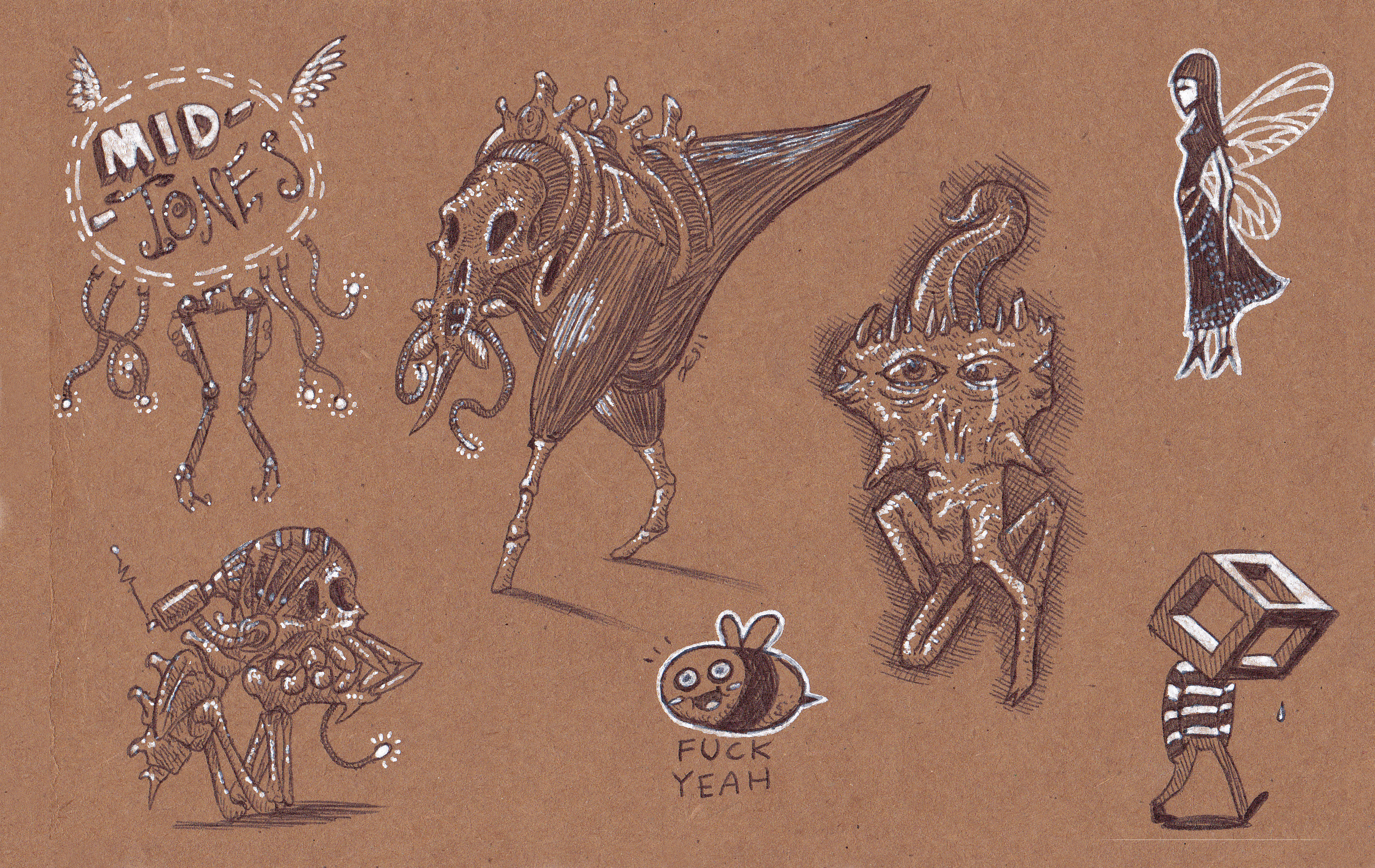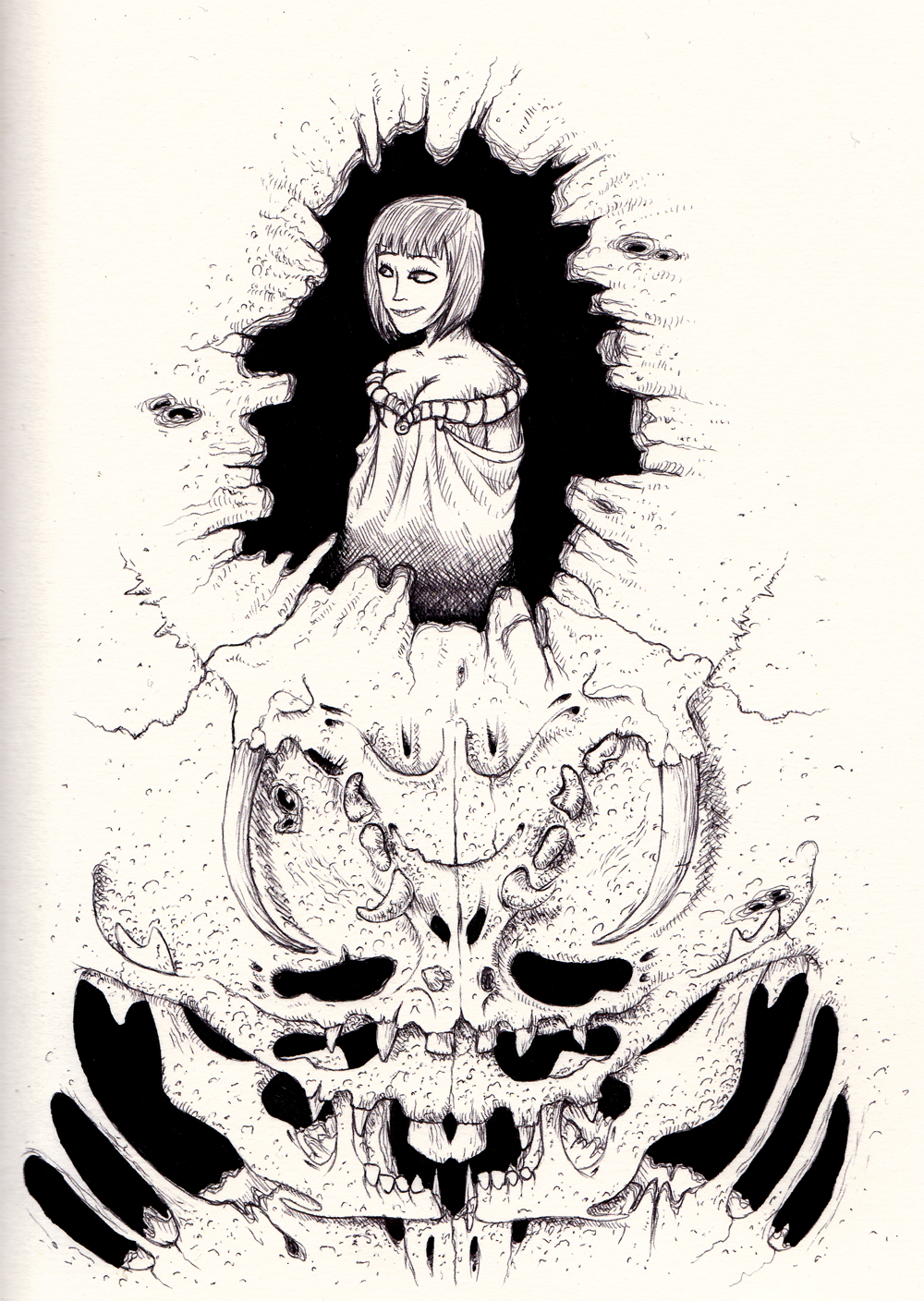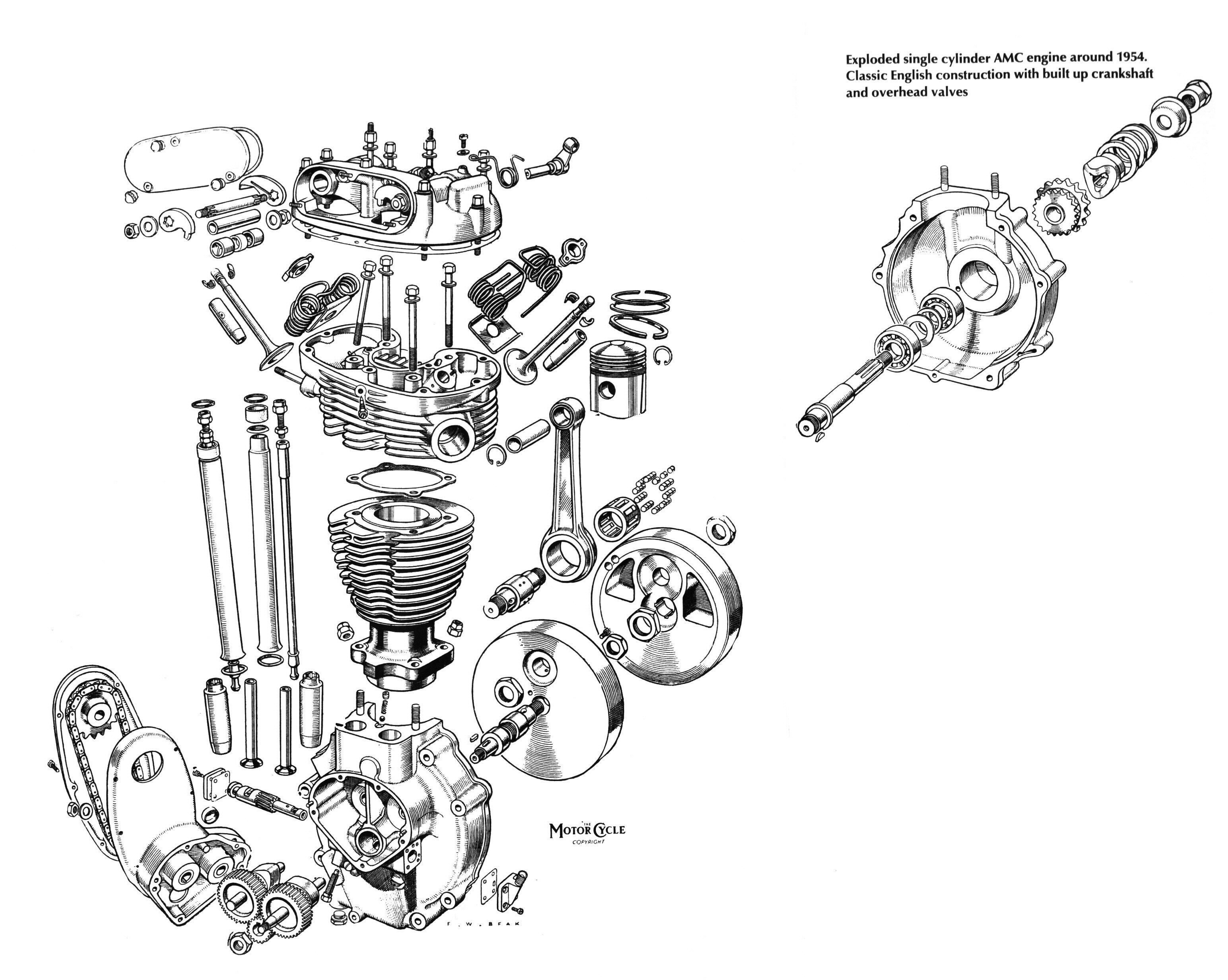Now for the 'second half' of this post. The art side.
So when I went to Italy, I took with me a little drawing pad, and here are the results from that and other post-holiday drawings. Be warned, the pencil ones are a little smudgy, as I didn't bring and fixative with me. How foolish. And legally impossible.


The airport
I drew these while we were waiting for our gate to be announced. I ate a ham and cheese baguette, it was pretty delicious. (I'll get around to rotating/separating that one with people eventually)

The cabin.
I like the regular repeating patterns of the chairs and lockers as you follow down the cabin. I pretty much used the whole flight as research for designing commercial Earth-to-Orbit vehicles...
...Which brings me to EVA suits.



I'll do a whole separate post about these. This thing on his back is a type of MMU (manned maneuvering unit).

Meet Plank-Head

Some possible tattoo ideas.

A lion statue (with cubs) on the side of the Basilica di Santa Maria del Fiore. We were waiting in line to get in for about half an hour, so I had plenty of time to draw it. I kept getting bothered by women trying to sell shawls to me. This makes some sense in that you have to be covered up to go into a church. It stops making sense when you learn that I was wearing trainers, jeans and a hoodie - I could not be any more covered up.

Prior to Italy, I spent a few days at my grandparents' house up in Durham. I had to babysit for an hour or so, so I entertained the two children (8 and 10 y/o) with my lovely '3 word game'. It's exactly as complicated as it sounds. 3 people play, each says a word. Hopefully, the 3 unrelated words will make an interesting combination, which the players must then visualise and draw. It went surprisingly well, and we managed 3 pages (this is just one). I'm in the process of combining them all onto one page and colouring them. The only particularly annoying part of playing the game was continually telling the children that they can't both say 'bum' in the same round. Oh children.
How I hate them.

I found this drill lying around the house, going for a more technical look, while still maintaining the observational construction lines. It's also a little wonky - I didn't use anything for guiding straight lines.
Back in A-levels we were given really rubbish coloured markers, which put me off them for a while. When I bought these markers, one of the main uses I planned to give them was for technical drawings such as these.
One of the main reasons why I like drawing machines, tools and industrial scenes is because I've been around them all my life, as my parents were always doing some DIY or repairing something. They still do. I think this is one of the factors as to why I like Dead Space so much, as most of the weapons are industrials tools, with designs heavily based on actual industrial tools, which I think makes them
way more interesting than typical sci-fi weapons.
"We looked at a lot of real tools like impact drivers, circular saws, and that sort of thing. They all have bold, simple silhouettes and strong colors, as opposed to the muted colors and shapes of guns. So we just carried those cues over to our weapons as much as possible."From the Official Dead Space 2 GuideI always seem to find a way to get Dead Space into a post, but so many aspects of the game tick so many boxes for me, something about it will be relevant to something.
Sorry.

I'm not sorry
Now for some other stuff, most of which is on paper. *
Gosh*
Most of these have better, lengthier descriptions on
DA:
Various doodles with markers.

(It doesn't have a proper title, so it doesn't get the
bold treatment).
Diamond on a Landmine
A little practice at drawing the ladies (Sng. Lady). You may notice the absence of any kind of detail in the feet. I need practice with feet, and this was in biro, so I wasn't willing to completely ruin a picture with
crappy feet. Also, I was listening to
this song.
Cow
Cropping is for
lazy people losers. Enjoy the hatching. Also, note the post-apocalyptic background. That cow is hardcore.
Nightwalker

Nightwalker is the name given to any Fentil 'animals' that remain active during the eclipse of its parent planet, Olympus. For this piece I wanted to try a more stylised look, and went for a sort of cut-out effect for the bone trees in the background. The cool monochrome palette helps the feeling of darkness, which is broken by the red light-emitting spots on the head of a opportunist predator as it (they have no gender) approaches a small stream. The Bonetree forest has hard edges, as during the eclipse, they retract their leaves, showing only their white, spiraled, bony, shells.

The original sketch (done in Italy), plus a possible future piece of a parent/baby Dplacate. As you can see, I initially planned to use a 'Platehead' instead of the hexapod I eventually used.
PrismHead
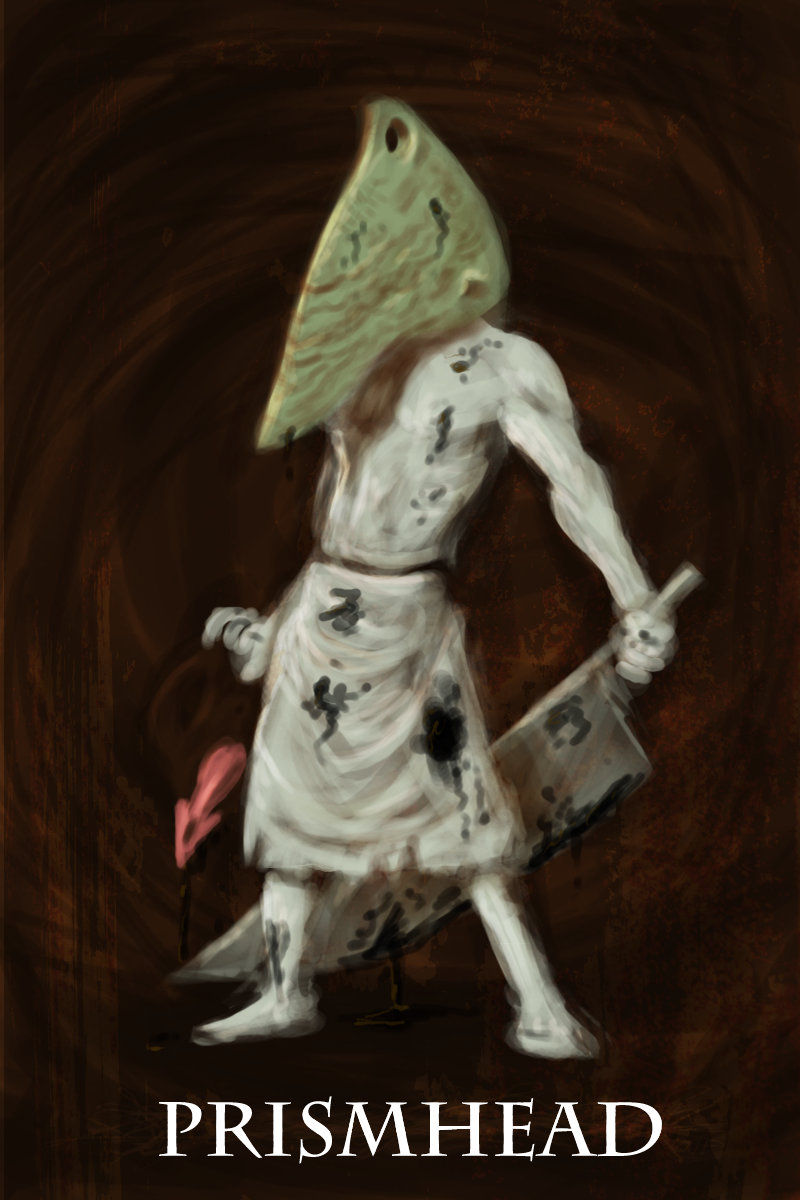
This one will probably go over most people's heads. It's an insanely niche inside joke. Obviously the body is that of
Pyramid Head from Silent Hill fame, whereas the head belongs to an alien called the
Prismalope which is found in Wayne Barlowe's book, Expedition. The similarity of head shapes led to this.
Also, the head in his hand is that of an
Arrowtongue, another inhabitant of Darwin IV and predator to Prismalopes. This is another sort of in-joke but on a more personal level, as about a year ago I started modeling and rigging an Arrowtongue (with plans to also do the same for a Prismalope) and animate a predator/prey chase scene with them, but I kept putting it off and pushing it aside for other projects and it has effectively died.
Cicada
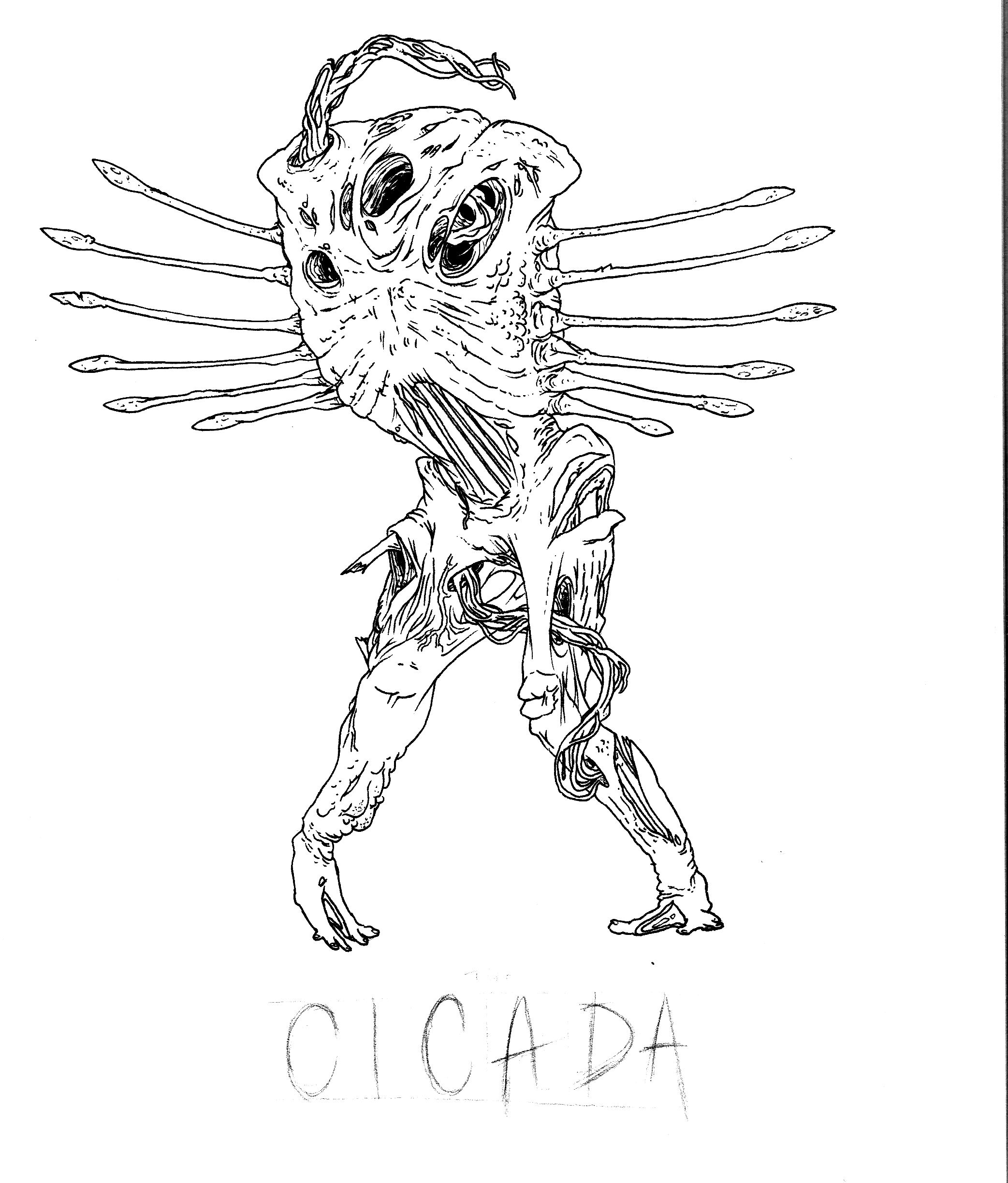
A
necromorph zombie thinger idea I scribbled out. It's in the same fiction as the maskjaw. This monster gets its name from the rattling 'song' given off by the vibrating bony rods projecting from the ribs. A low resonant noise can be heard as the sinuous chords in the abdomen are plucked by the remains of fingers. The multiple holes in the torso also give off deep, gurgling sighs. Snaking through its body is a ropey, sinuous tentacle.
The creature shuffles slowly through the dark corridors. It's best to avoid it, as the tentacle can snatch out. Cutting off the 'rattles' will slow it down and disorient it, but it can't be stopped so easily...
MechMan
Yup.
Divertimento

I wasn't sure what to name this one, but it's an old man playing a little song for a little girl. I'm happy with how the markers came out in this one.
Fast Food
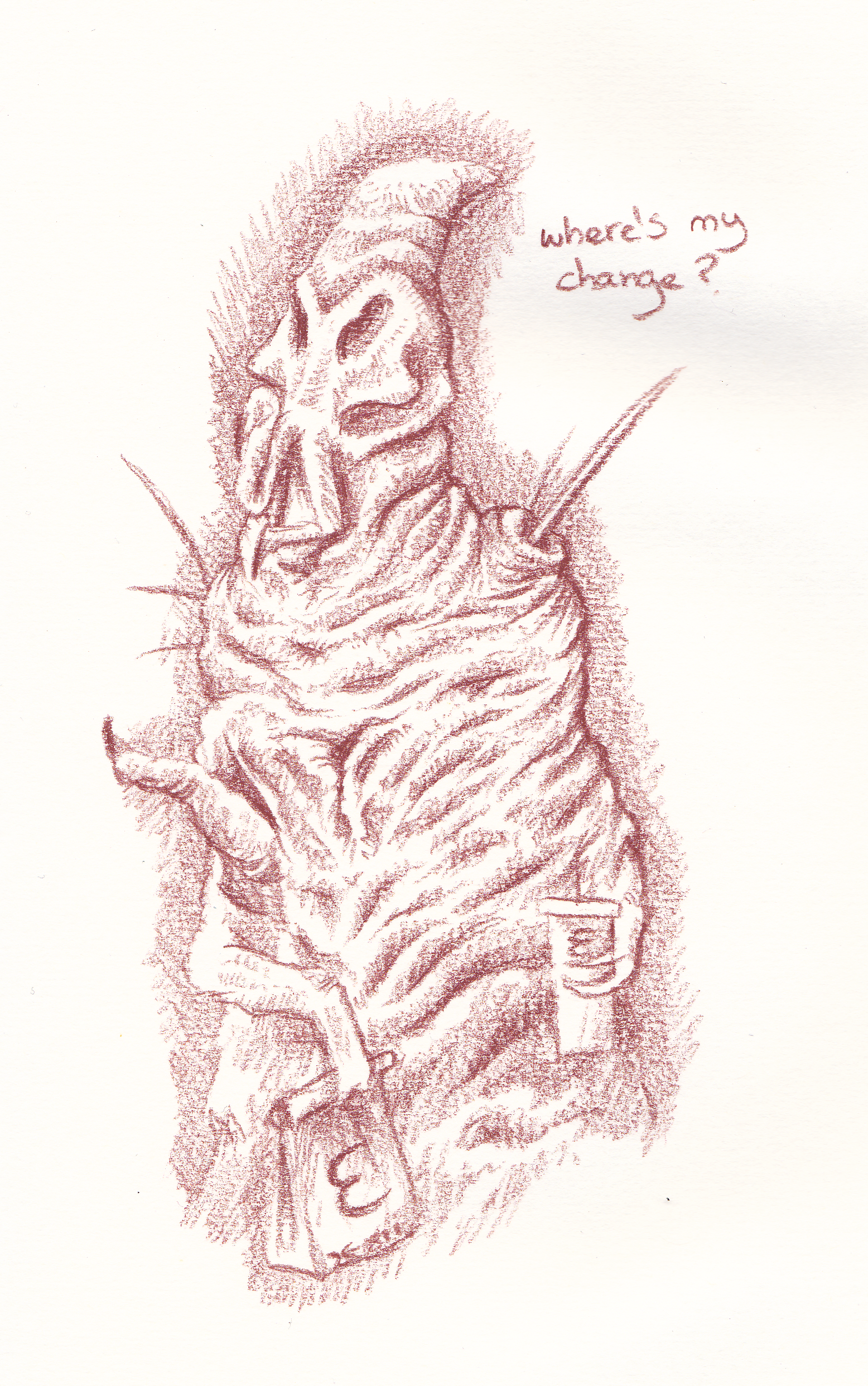
Practice with a new TerraCotta pencil. Get me, it's almost like I'm a
real artist.
Smile for the Camera

Practice with a charcoal pencil from the same new set. He has a cuddly
Tardigrade. I like shading wrinkles, and big open spaces are harder to shade without making them too dark. Either that or I'm just rubbish. I did read somewhere that big spaces need softer shadows, whereas smaller spaces need higher-contrast shadows, and that's what I work with.
These two drawings taught me not to try and put in too many tiny details, and to focus more on the bigger picture.
Fog Walkers

The middle picture is of a Pouchback and its calf searching for shrubs to feed on. They live near the polar circles, where their downy fur keeps them warm. In the background is a forest of bonetrees. Pouchbacks are a 'primitive' vertebrate group, retaining antenna and lacking the olfactory 'tongue' which 'modern' vertebrates use for picking up scents.
The picture on the left is a basking Photonimal; An ancient group of red-skinned organisms that include the 'trees' in the ocean and the tiny airborne creatures forming the layer around the planet which helps block out harmful radiation. This particular individual is from an iguana-sized, amphibious species.
On the right is a resting Hopper, a mobile plant (Blas). Their dark blue skin acts like a leaf and absorbs sunlight for photosynthesis, but they are also capable of consuming food to supplement photosynthesis. Their glassy, unblinking eyes are always on the look-out for predators.
Imagination

This one is from last night as a sort of concept, and it was fun to do something rough and sketchy. I plan on drawing up a nice digital version of this, which I think is inspired by the colouring of Anthony Clarke (AKA
Nedroid)

Although his
hilarious comics are only in shades of blue, his other colouring is beautiful.




He also colours for the comic
Dr McNinja.
The colours are intense, but not painfully bright. I want to discover this secret.
For my 'imagination' drawing, I was thinking blue/purple for the fleshy legs, and yellowy-green for the background. More colour theory. Yeah!

Woo! AAAAAAND now for Fentil business.
I spent a good portion of my drawing time in Italy on the re (re re) design of Dorsoplacates, which I covered ever so briefly two posts ago.





I really like this new design, and I'm inexplicably proud to have gotten rid of a tail, which is something that baffles me is always in alien designs.
Why? (This is going to be science-heavy, you were warned.)
I understand where tails come in handy, on terrestrial Earth animals they are useful for balance in their most basic use, such as in cheetas and monkeys (Also, most raptors had fused tail-bones, so their tail was just a rod that bends at the base), but some animals store fat in their tails, some use them to swat away flies, some have flukes for swimming, some are prehensile etc etc.
But , tails are just an extension of the vertebral column, which in our ancestral fish was used for swimming, so unless your aliens' aquatic ancestors swim in a fish-like manner with a body extension that begins behind the rear set of legs, it makes no sense to have a tail. In fact, the main difference between US and THEM is that our butt is before the end of our body segments. Not necessarily the exoskeleton or compound eyes. Our butts. This is what gives us the 'post-anal tail' seen in ancestors as far back as lancelets:

Say hi to grand-daddy
Crustaceans such as lobsters and shrimp (and crabs) have it differently, and have a 'tail' composed of rear body segments. These segments have reduced/altered limbs. This is due to the differentiation of segments thanks to mr Hox gene.

Thanks, Nature.com The Hox genes (as I understand it) control how segments and other repeating units (such as limbs) differentiate and form. Now, pretty much any animal 'up' from a worm is also a segmented creature (think spinal column) and as such,during development the segments are told what to do by these genes (In humans, perhaps 'rib', in an insect, perhaps 'mandible'). Sometimes during meiosis, or chromosome crossover, Hox genes (like all genes) can end up duplicated or lost, and this can result in gained or lost segments in a single generation. I imagine this same process is how lengthy legless snakes, slow worms and caecilians end up so long and wormy. Despite the obvious implications, hox genes are a lovely piece of evidence for evolution and common ancestry, as the hox gene for 'eye' in a fruit fly will produce a perfectly healthy, working mouse eye when transplanted into a mouse (while the mouse is still an embryo). This shows that even organisms as distantly related as flies and rodents are all using the same genetic operating system, so to speak.
(
Now back to Fentil )
I imagine that life on other planets will have a similar segmentation system (or perhaps a branching/pod-based system in possible fractal-like organisms) and I've chosen this with Fentil life.
In Dorsoplacates, there are only 3 'segments' remaining after the rear pair of legs, most of which are fused into a sort of cradle. A tail is impossible. Instead, some of the more agile DPlacates use their rear legs in the same manner as a tail. These are known as Whip Runners.

Again, I understand that sometimes a tail just looks nice, I'm just saying that there doesn't necessarily
need to be
one, or even one at the very back of the body.
The final sorting out of their design will make sorting out my proposed 3rd year film a lot easier now that I know what the cast looks like.
On the topic of settling designs, While I was at home I figured out how to keep ElectroHeads in the Fentil fiction...It 'turns out' that they are distant relatives of inflatogastrates (balloon worms)

The same 3 siphons which inflatogastrates use for locomotion have remained lungs in Electroheads, and are on a lobster-like tail (remember earlier about Hox genes?) which has folded back over itself to protect the delicate sacs. I've also had to concede to physics (you win this time) and give them basic eyes and echo-location, as electro-detection doesn't even work over long distances in water so in air it's going to be near-useless, despite Fentil's denser, wetter atmosphere. I've wriggled around this and made it so they emit metallic 'chaff' from the glowing pads on their feet. This helps extend their electrical range and aids in marking territory. Woo, loophole.
I
think that's all. Well done for making it this far. I may have to do posts more often in order to make them a decently short length.

